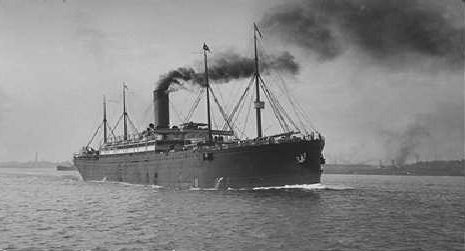Main Facts
Date of Ship Wreck: The Steam Ship SS Republic’s wreck dates back to October, 1865.
- Place of Wreck: The ship wrecked about 100 miles off the Georgia coast.
- Goods carried: The Ship carried with it the some expensive goods usually silver and gold.
- Cause of Wreck: The Wreck was caused due to the violent gale off the Georgia Coast
- Loss of Human Life: Luckily the passengers and crew managed to leave the ship successfully, resulting in zero percent life loss.
- Economic Loss: The ship was filled with tons of silver, gold coins and ingots which was supposed to be transported West Coast to help rebuild the war-ravaged south. The wreck provided the country a serious setback making a huge loss and economical crisis.
- Salvage:
The efforts for the recovery of SS republic proved to be one of the
largest and richest find in the history of salvaging success. The recovery
yielded with over 51,000 U.S. gold and silver coins with nearly 14,000
artifacts.
Historical Overview
1853: Launched in Fells Point, Baltimore as the Tennessee August 31
1853: In commercial service
transporting passengers and cargo
1855: First transatlantic passage by a
steamer from Baltimore
1856: Inaugurated steamer service
between U.S and South America
1856-57: Sailed the Nicaragua route
with adventurers: Gold Rush "Californios" and soldiers of fortune
following William Walker
1857: In commercial service
transporting passengers and cargo from New York to New Orleans, and also from
New Orleans to Vera Cruz, Mexico
1861: At the outbreak of the Civil War
in April, Tennessee was trapped
in harbor at New Orleans. Early the next year she was purchased for service in
the Confederate navy
1862: April 29 - Captured by Union
forces in New Orleans and pressed into service
1862-64: Notable Civil War naval
service included participation in the Mississippi River campaign, the Gulf
Coast Blockade, the Battle of Mobile Bay, and service off and on as the
flagship of Admiral David Farragut.
1864: Name changed to USS Mobile after
the Union’s Victory at the Battle of Mobile Bay to avoid confusion with the
captured confederate ironclad also named Tennessee
1865: Bought at auction by Russell
Sturgis and investment group; repaired and refitted, then renamed the SS Republic and returned to a New York-New
Orleans run in May
The Last Voyage of SS Republic:
October 18,
1865:
The SS
Republic leaves its New York
pier bound for New Orleans loaded with a reported "$400,000 in
specie."
October 23
1865:
In the
morning, the SS Republic
encounters a gale which turns into a “perfect hurricane” before night, when the
steamer was possibly off Carolina.
October 24,
1865:
The
paddlewheels stall and can't carry the engine past dead center. The SS Republic is left powerless, drifting and
at the mercy of the elements. Steam is raised on the donkey boiler to start the
pumps.
October 25,
1865:
At
9am, the "donkey boiler" fails and water pours into the hold. The
crew begins work on a makeshift raft and prepares the lifeboats. At 1:30 pm the
lifeboats and raft begin launching. At 4:00 pm, when all but 21 people were in
the boats, the SS Republic sank
suddenly. All passengers
and crewmen safely make it into a lifeboat or raft except for two men who are
last seen trying to swim through the ship's floating debris. Captain
Young is pulled down with the sinking ship, but he narrowly escapes and swims
to the safety of a lifeboat.
October 26,
1865:
Lifeboat
#1, under the command of the Republic's
captain, is rescued by the brig John W.
Lovitt.
October 27,
1865:
Lifeboat
#2 is rescued in the afternoon by the schooner Willie Dill. Lifeboat #3 is spotted and rescued late on the
27th by the barkentine Horace Beals.
October 29,
1865:
Lifeboat
#4 rescued after four nights at sea by the schooner Harper.
November 2,
1865:
The
raft, which departed with 14 to 18 people aboard, is spotted off Cape Hatteras
by the U.S. Navy steamship, USS Tioga.
Only two people remained on the raft to be rescued. The others disoriented by
thirst and heat, leaped into the sea and drowned swimming toward what they
falsely envisioned to have been land.



